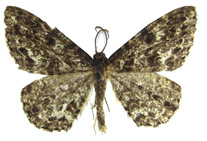Abstract
Joicey & Talbot (1921) described 2 new species and 19 new subspecies of butterflies and one new subspecies of Zygaenidae from Hainan Island, China. The specimens studied by Joicey & Talbot from Hainan were obtained by Charles Talbot Bowring (1862–1932) between the years 1918 and 1920. Bowring, who also used the Chinese name Bao Lai-ling, was Commissioner of Customs at Hoihow (Haikou), capital of Hainan, from 1915 to 1920, and “sent many thousands of specimens” of Lepidoptera to the Hill Museum, Surrey, England (Talbot, 1921), where they were studied by James John Joicey (1871–1932), owner of the Museum, and George Talbot (1882–1952), its Curator. Joicey & Talbot (1921) also mentioned that Mr. Young Chun, a Chinese graduate of Harvard University, made a journey of three months in the Five Finger Mountains, Hainan and “managed to get together a very fine lot of Lepidoptera for Mr. Bowring”. Prof. Woon-Young Chun (1890–1971) eventually became a very famous botanist in China, and his father, a Chinese diplomat, was a friend of Bowring. Prof. Chun published many botanical monographs and papers during his life time, but he also wrote one obscure entomological article dealing with new butterflies found in Hainan. In 1929, he published the paper “Description of new butterflies from the island of Hainan” in Agricultura [Zhong-da-nong-xue], which was a Chinese journal issued by the Agricultural College, National Central University (now called Nanjing University), Nanjing. Chun (1929) mentioned that “the new butterflies here described were part of a collection made on the Island of Hainan during 1920 …” and “they were determined by Messrs J. J. Joicey and George Talbot”. In that paper, Chun “described” one new species and 10 new subspecies of butterflies which had already been named by Joicey & Talbot (1921). Surprisingly, Chun's descriptive text is copied almost verbatim from Joicey & Talbot (1929), with a very few changes and additions, and nowhere does he mention that the original descriptions of the taxa listed by him had been published by Joicey & Talbot in the first volume of the Bulletin of the Hill Museum in 1921. A possible intention of Chun is that he just wanted to introduce those new butterflies collected by himself in Hainan to Chinese readers. The fact is that, judging from information in Joicey & Talbot (1921), the specimens on which the “new” taxa in Chun (1929) were described, had indeed been collected by himself in 1920. Nevertheless, all the names “described” by Chun ought to be credited to Joicey & Talbot (1921) and not to Chun (1929). In a strict sense, the names published by Chun in 1929 should all be regarded as junior primary homonyms of the names first published by Joicey & Talbot in 1921. Some people who may have had access to Chun's paper may have been misled in believing he was the original author of such names. Even worse, the Zoological Record for 1932 listed Chun's 1929 paper based on a 6-page offprint of the original, without place of publication, and attributed the “new” taxa to Chun. Whereas the paper by Joicey & Talbot (1921) is nowadays easily consulted, by being available online through Internet Archive (www.archive.org/) and the Biodiversity Heritage Library (www.biodiversitylibrary.org/), Chun's 1929 paper is almost unobtainable. So, for a long time, scholars who study butterflies from Hainan and adjacent regions have often been confused with questions such as whether Stichophthalma howqua bowringi was described by Chun in 1929 or by Joicey & Talbot in 1921. After comparing the text of Chun (1929) with that of Joicey & Talbot (1921) together, we clarify this historical problem in this short note.

